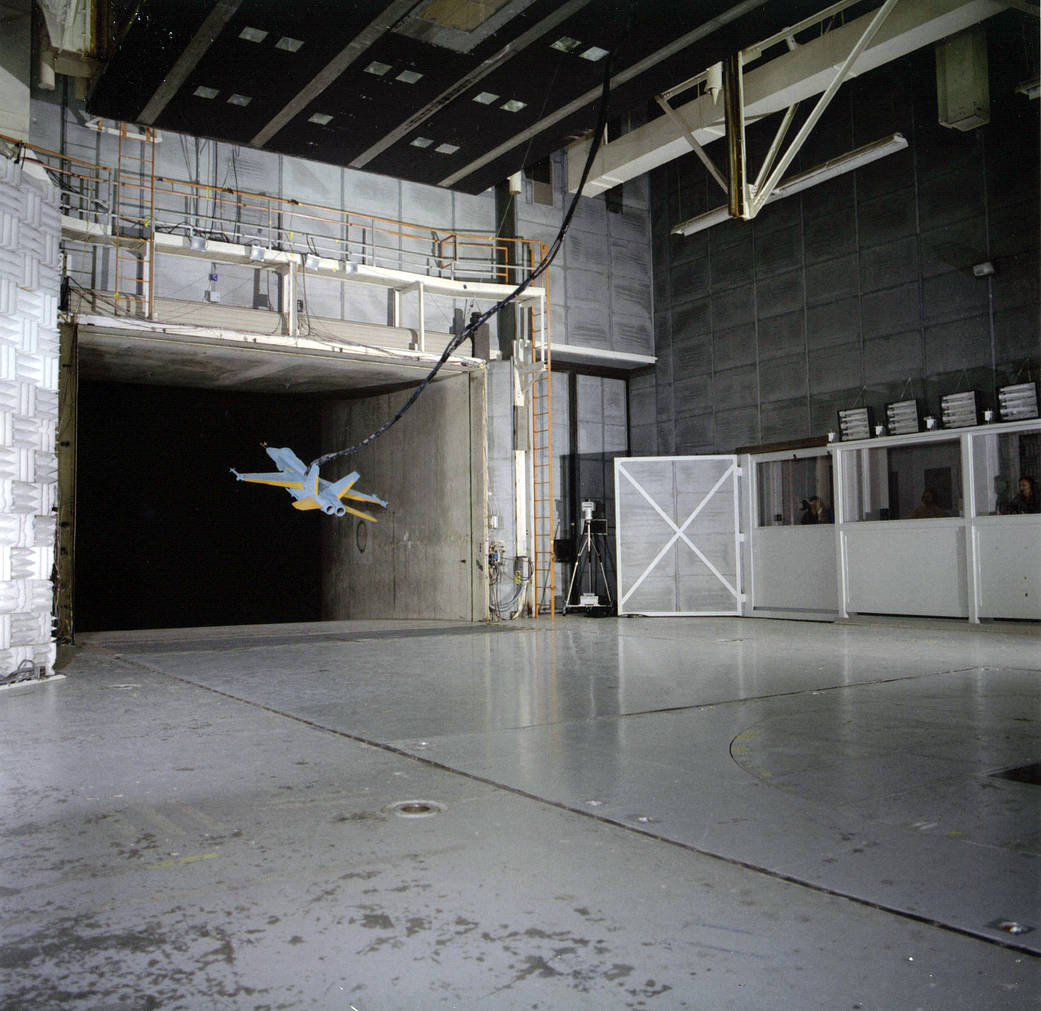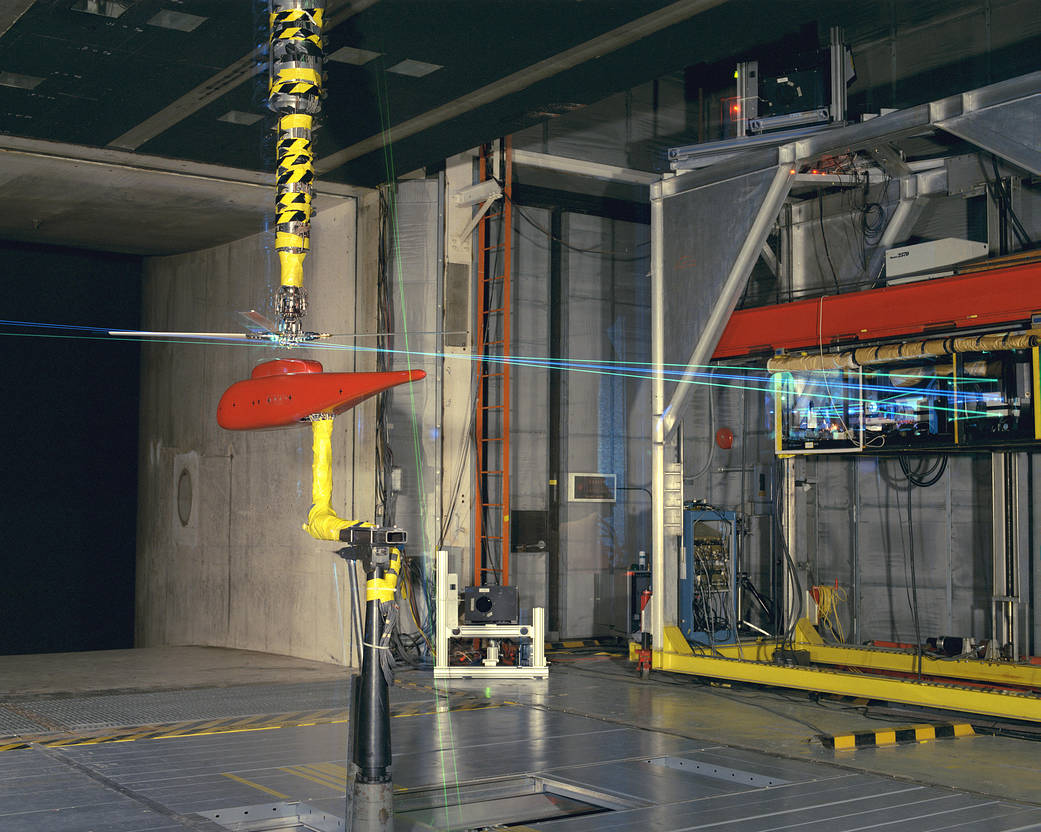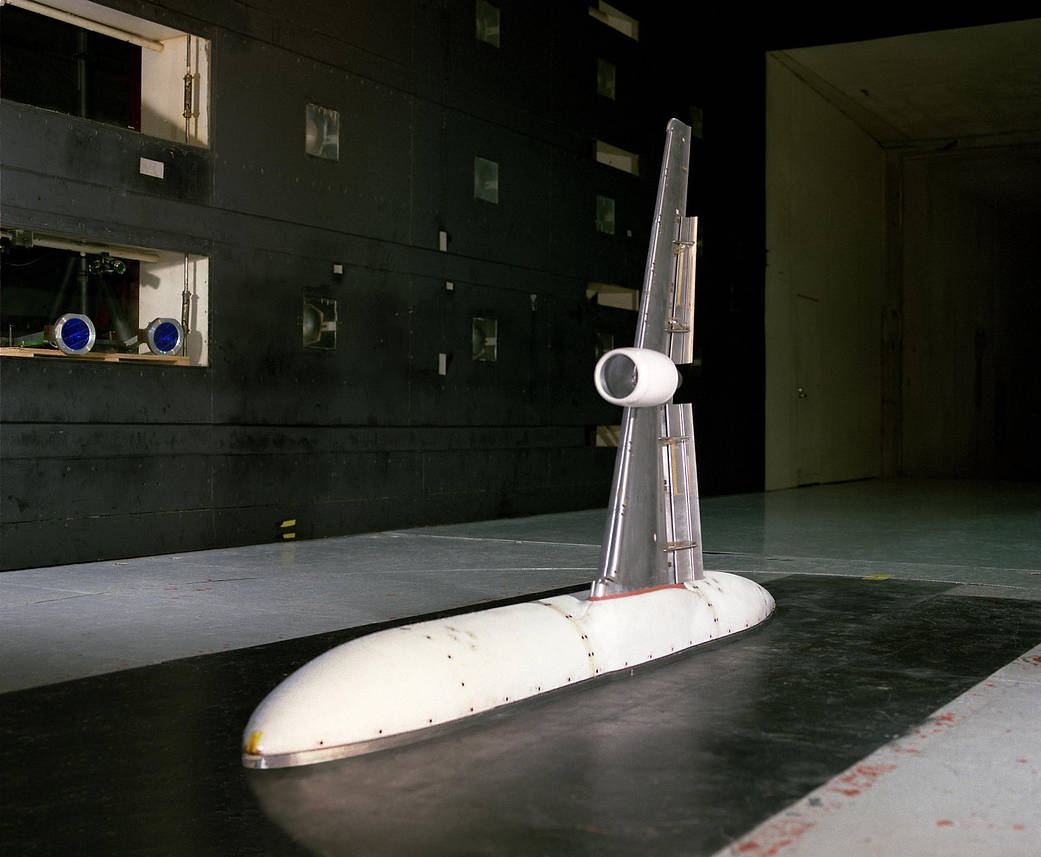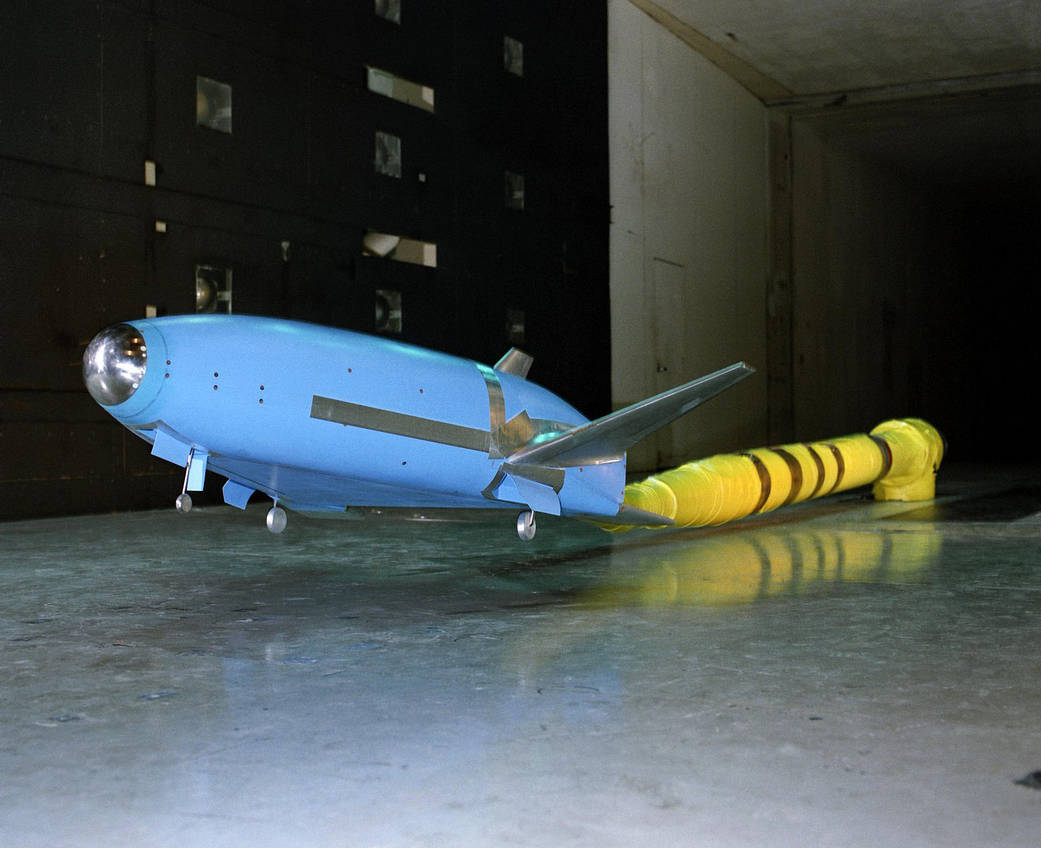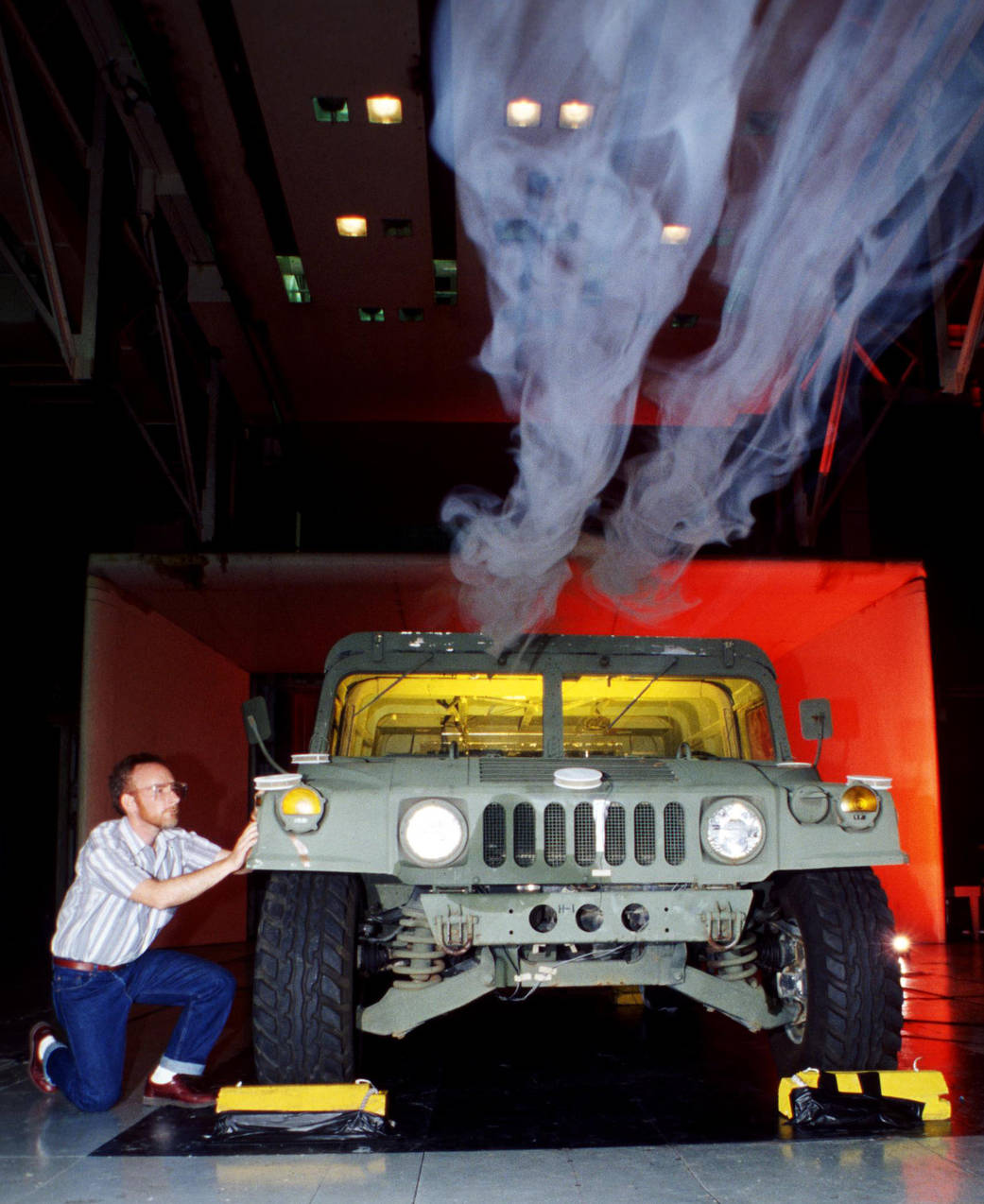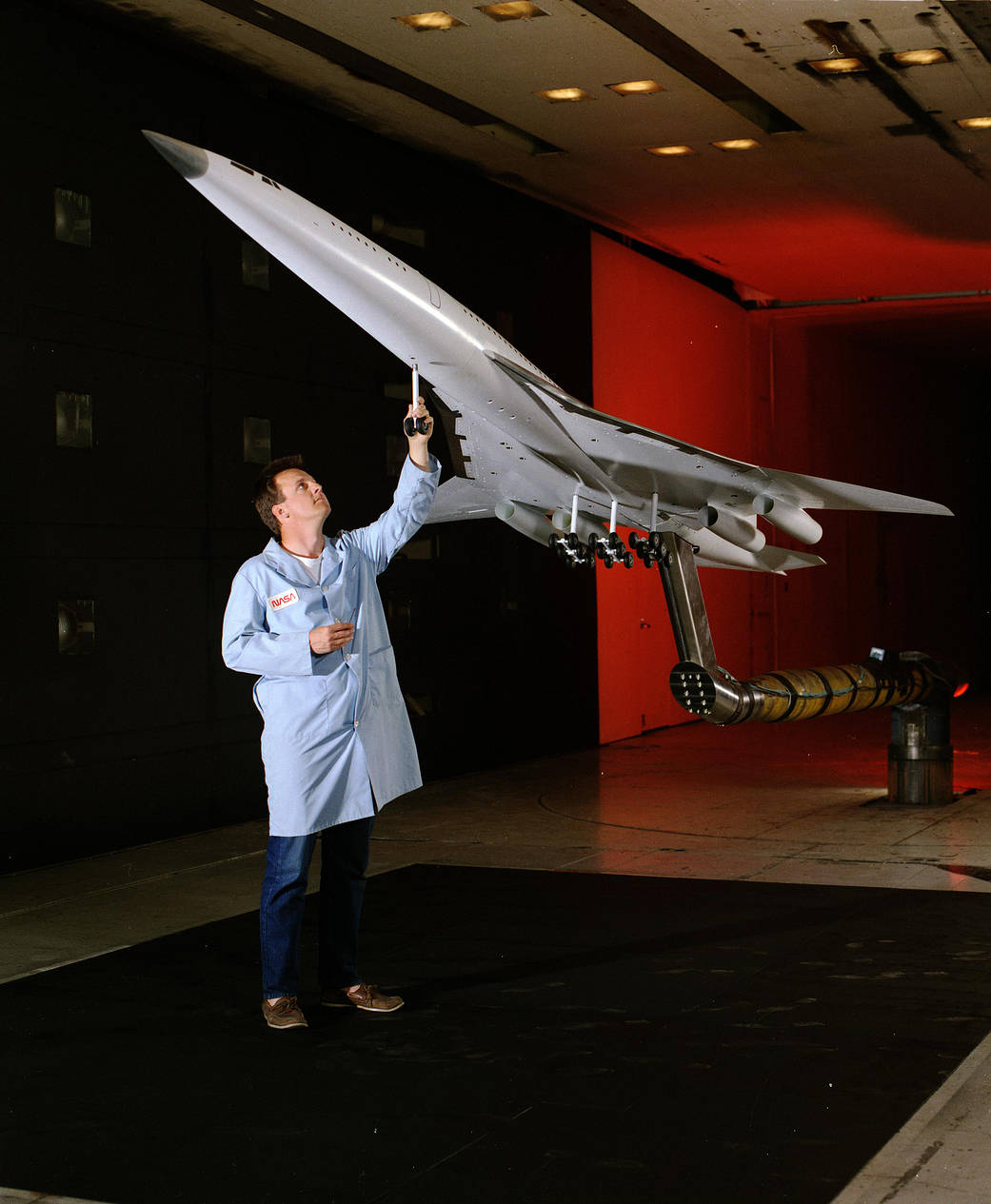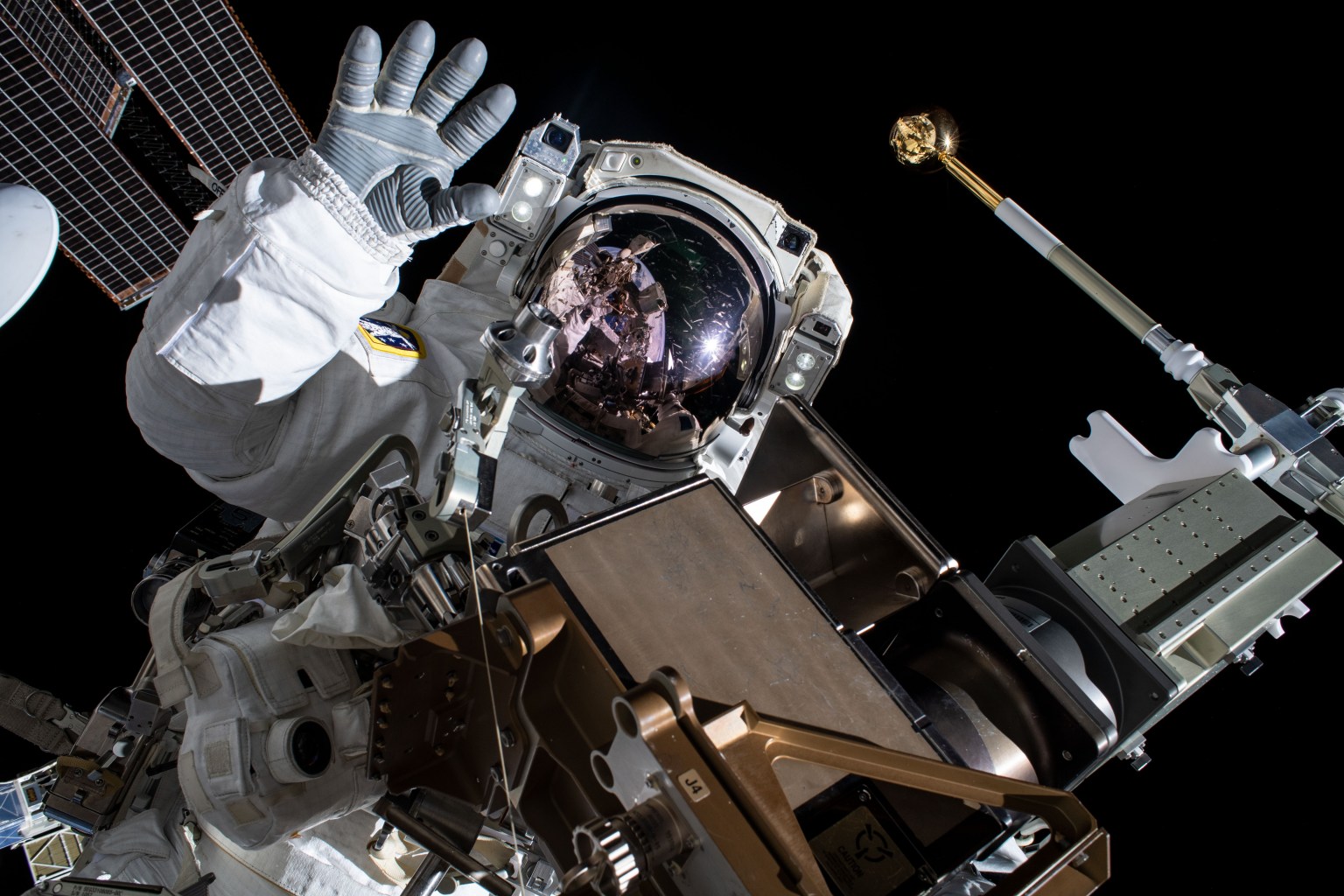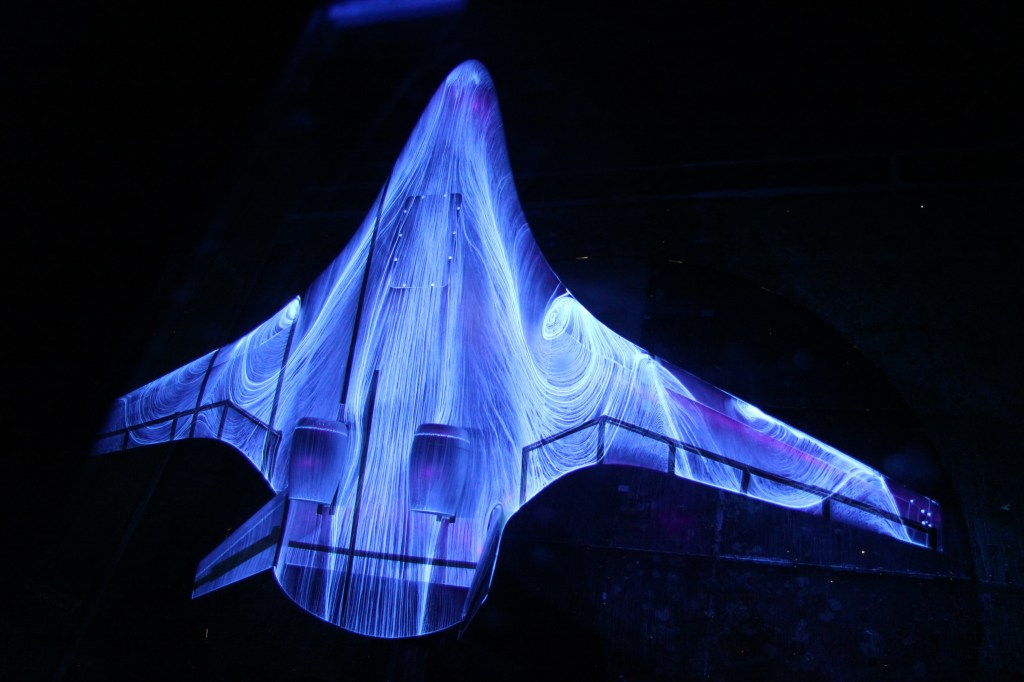
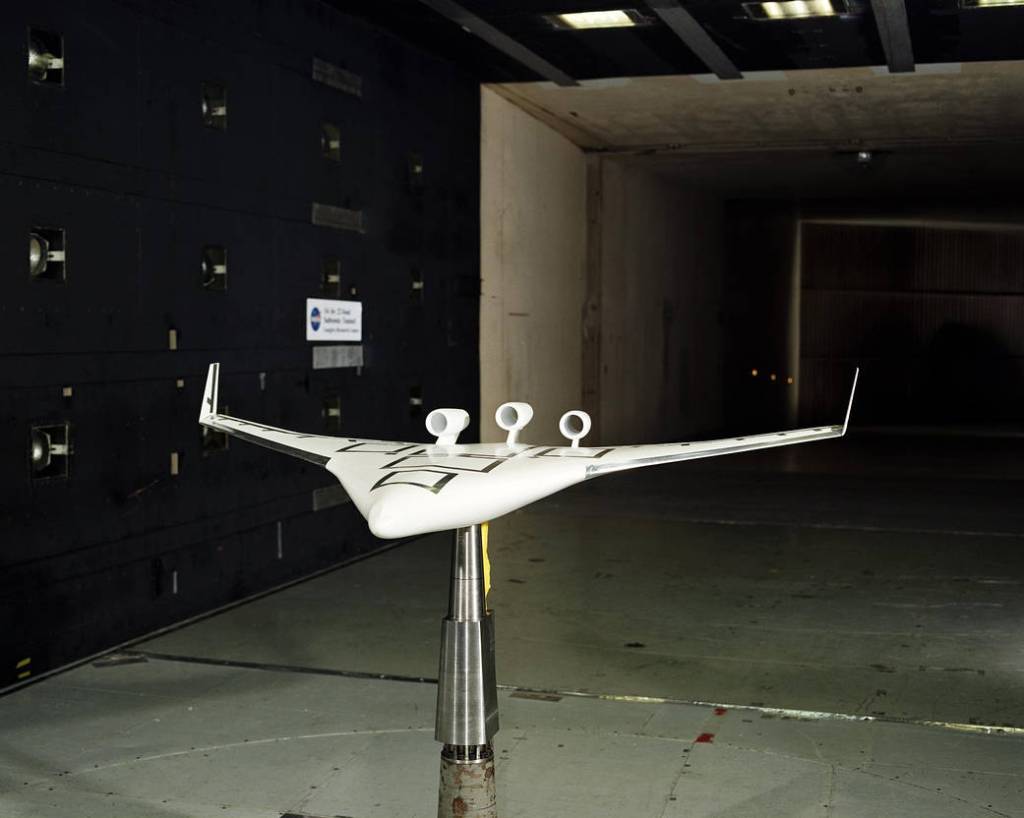
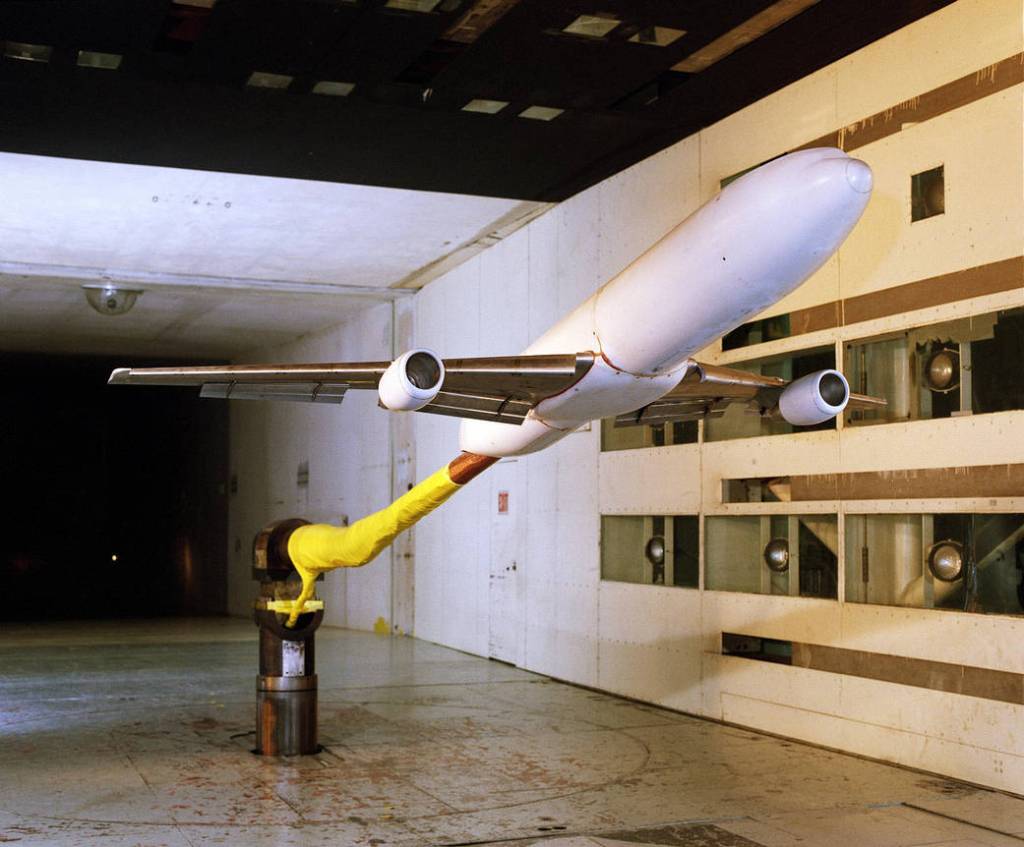
14- by 22-Foot Subsonic Wind Tunnel
The 14’x22′ Subsonic Wind Tunnel assesses conventional performance for low-speed tests of powered and unpowered models of fixed- and rotary-wing civil and military aircraft over a wide range of takeoff, landing, cruise and high angle-of-attack conditions.
Focus Areas and Capabilities
Learn more about the specifications and capabilities of this wind tunnel.
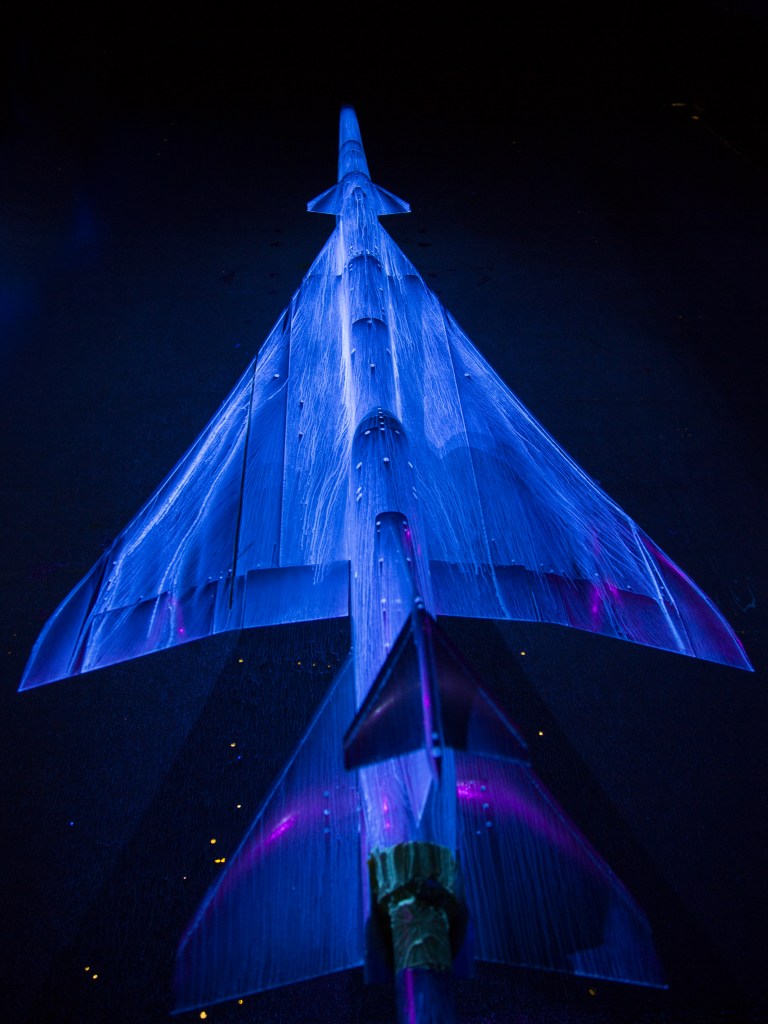
Characteristics
The tunnel can be easily reconfigured for acoustic, tethered free-flight and forced-oscillation (dynamic stability) testing, as well as for motor-sports studies. Investigators can choose from either closed (walls, ceiling, and floor) or open (floor-only) test-section.
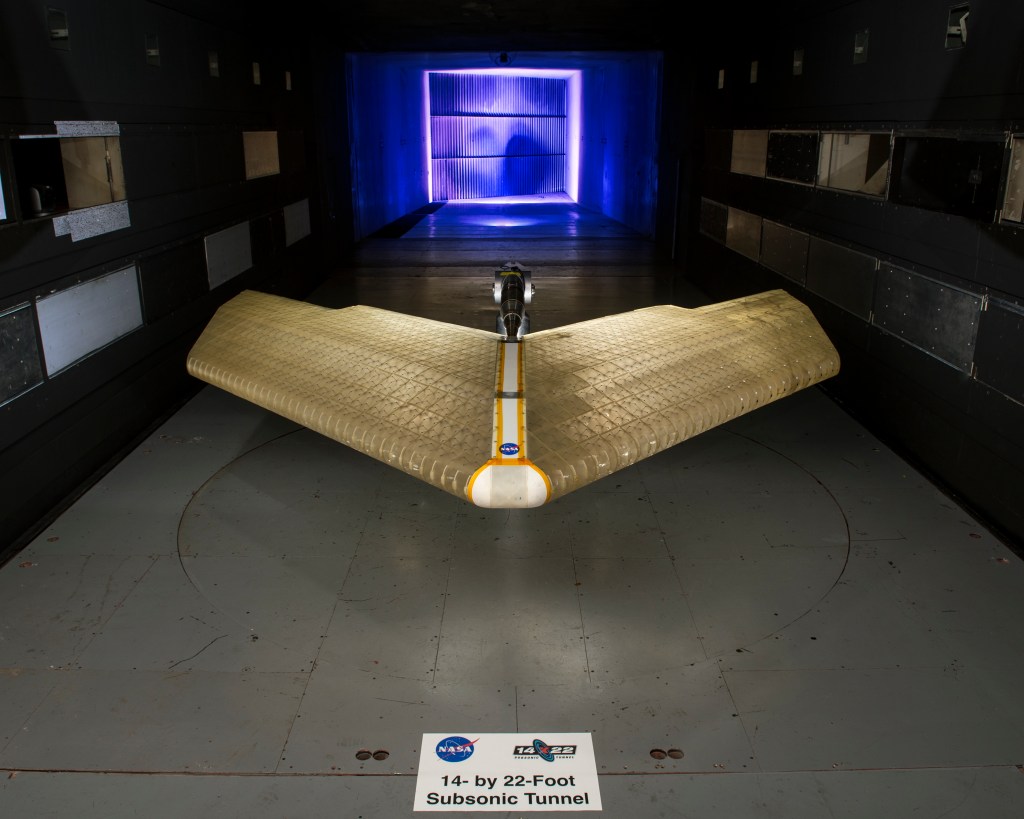
Quick Facts
Today, the 14×22 assesses conventional performance for low-speed tests of powered and unpowered models of various fixed- and rotary-wing civil and military aircraft over a wide range of takeoff, landing, cruise, and high-angle-of-attack conditions.
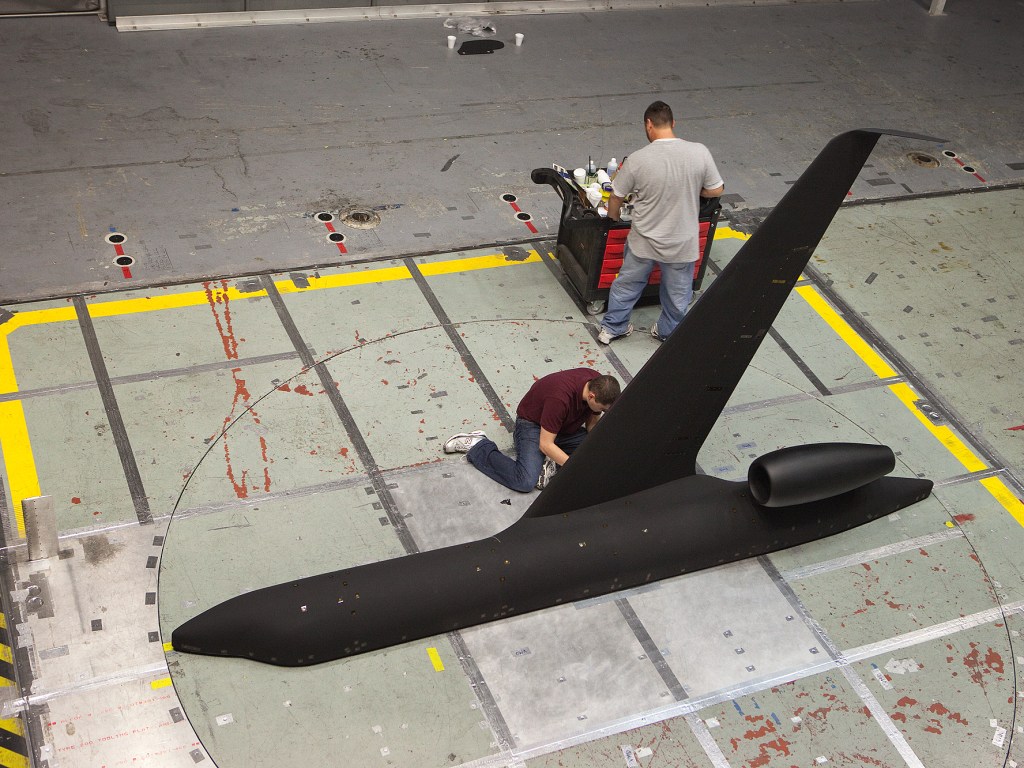
Data Acquisition
The 14×22 is ideally suited for low-speed tests to determine high-lift stability and control, aerodynamic performance, rotorcraft acoustics, turboprop performance, and basic-wake and flow-field surveys.
Virtual Tour
14-by 22-Foot Subsonic Tunnel
Interact with the 14-by 22-Foot Subsonic Tunnel Tour about Virtual Tour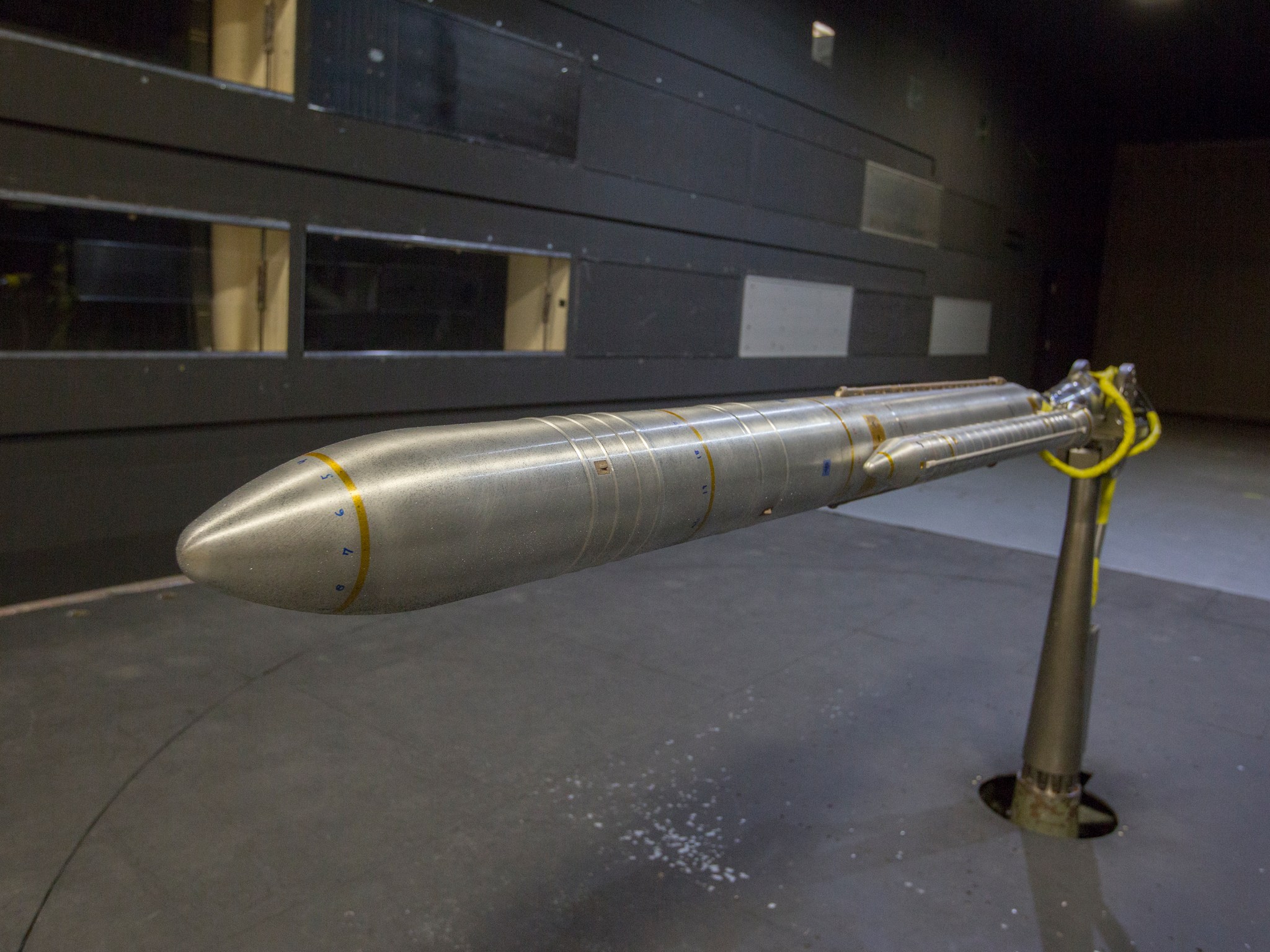
14-by 22-Foot Subsonic Tunnel Gallery
Contact Information
14-by 22-Foot Subsonic Wind Tunnel
Facility Manager: Lisa Brown
(757) 864-5068
NASA Langley Research Center
Hampton, VA 23681
(757) 864-1000
Fact Sheet
14-by 22-Foot Subsonic Wind Tunnel
Initially names the V/STOL (vertical/short takeoff and landing) Tunnel, then the 4-by 7-Meter Tunnel, and finally, the 14-by 22-Foot Subsonic Tunnel (14×22) was constructed in 1970 to provide an improved understanding of the aerodynamics of V/STOL aircraft.
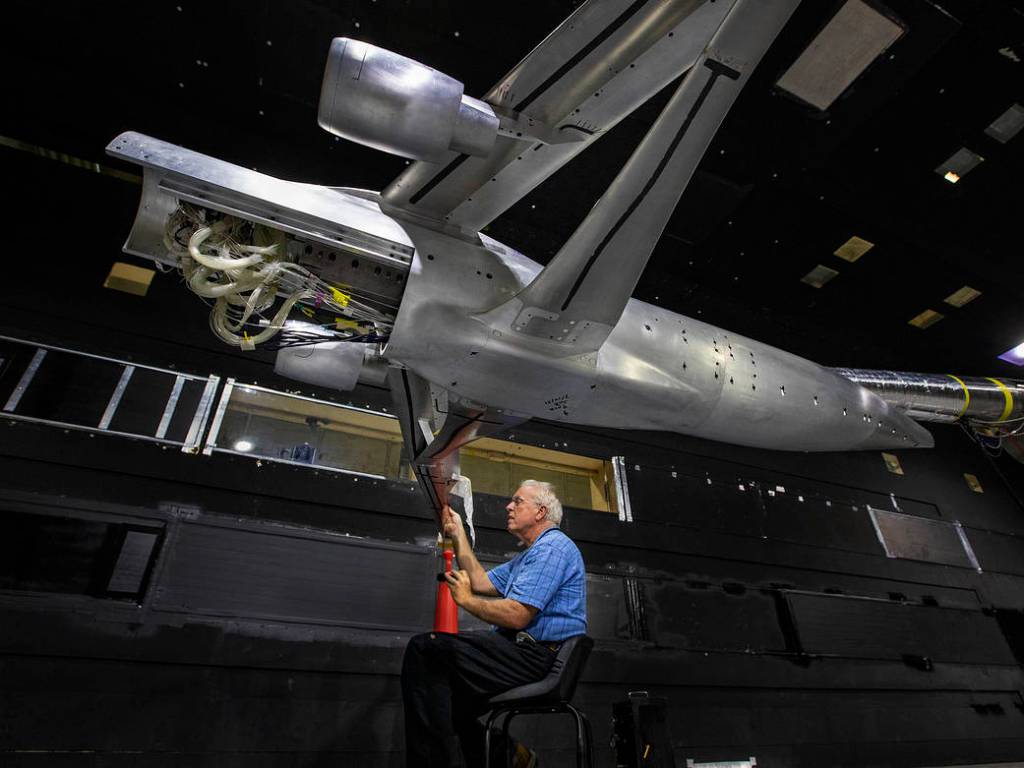
AETC Subsonic Facilities
NASA operates four Subsonic Facilities.
The 9-by 15-Foot Low-Speed Wind Tunnel, the 14- by 22-Foot Subsonic Tunnel, the Icing Research Tunnel and the 20-Foot Vertical Spin Tunnel.

AETC Ground Facilities
AETC sets the strategic direction for NASA’s versatile and comprehensive portfolio of ground test aeronautics research capabilities.
Among these assets are subsonic, transonic, supersonic, and hypersonic wind tunnels and propulsion test facilities at Ames Research Center, Glenn Research Center, and Langley Research Center.
























